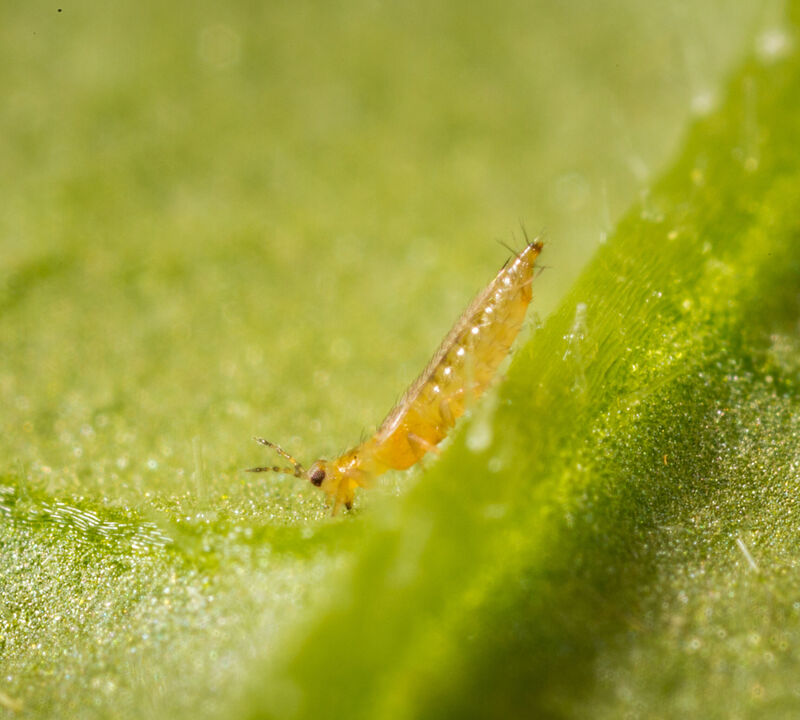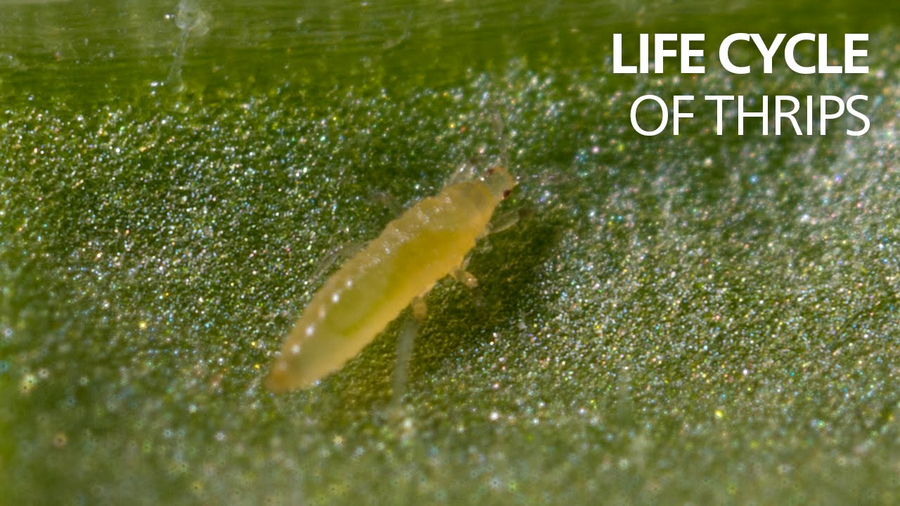 Western Flower Thrips Frankliniella occidentalis on a leaf
Western Flower Thrips Frankliniella occidentalis on a leaf
Thrips definitely count as 'unwelcome guests,' but it's not always easy to find out how the pest got into the greenhouse or field concerned.
Generally speaking, there are three 'routes' that thrips take when getting into a crop:
1. They were already there
Thrips are experts at hide-and-seek - especially hiding. In winter, the insect hides away in sheltered spots, in crevices, on plant waste, or in the ground. Their pupae are also concealed in the soil. Thorough disinfection is therefore very important: you can do this as soon as the crop has been cleared out of the greenhouse or field.
2. They fly into the greenhouse
Adults can fly into the greenhouse through the vents. These may be native species and thrips from neighbouring greenhouses. Installing insect netting in the vents can certainly help, but it is not always enough. If the infestation level is high, they can simply fly in through the doors. To prevent this, some growers use overpressure in the greenhouse.
3. They come in with plant material
Larvae and eggs can 'hitch a ride' on cuttings or young plants and are almost invisible. The existence of this route into a greenhouse sometimes leads to discussions or arguments between the grower and the supplier of the plant material. You can avoid this by making solid agreements. If the plant nursery does not use chemical products with a long-lasting residual effect, it is easier for the grower to build up a population of natural enemies.
Thrips infestations often start along paths and in warm places. From there, the insect moves further into the greenhouse or field crop, either under its own power (by flying) or drifting with the air. It can also hitch a ride on materials.
Western flower thrips (Frankliniella occidentalis) generally makes itself at home in the upper levels of the crop and in the flowers. Onion thrips (Thrips tabaci) is found everywhere, through it prefers the underside of young leaves. Echinothrips americanus, Impatiens thrips starts off low down in the crop, on the underside of leaves near the veins. These thrips are also found on weeds in the greenhouse; a good reason to put weed control at the top of your to-do list!
